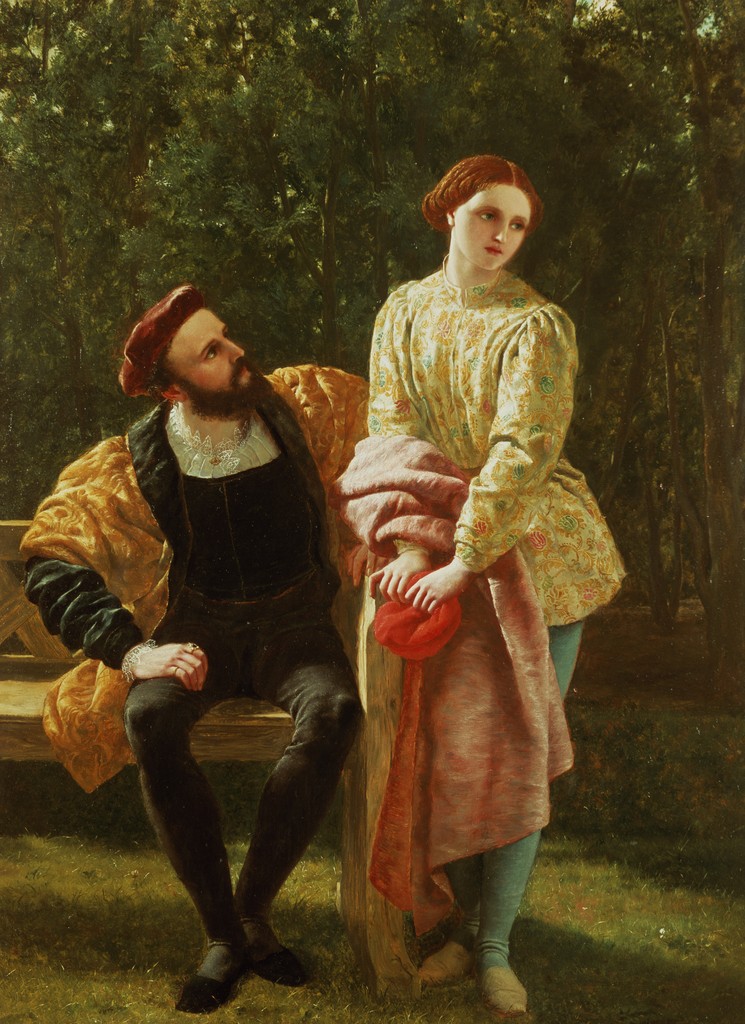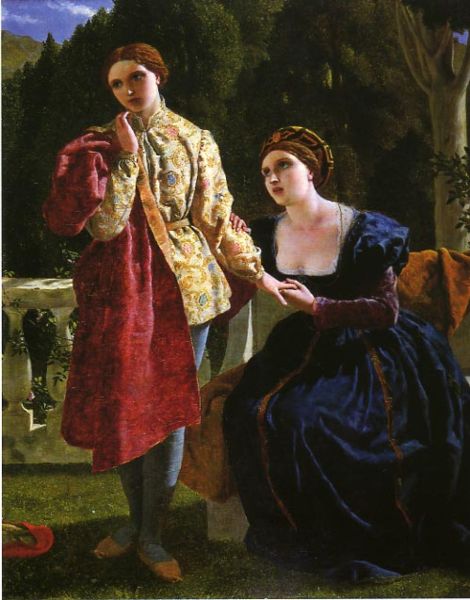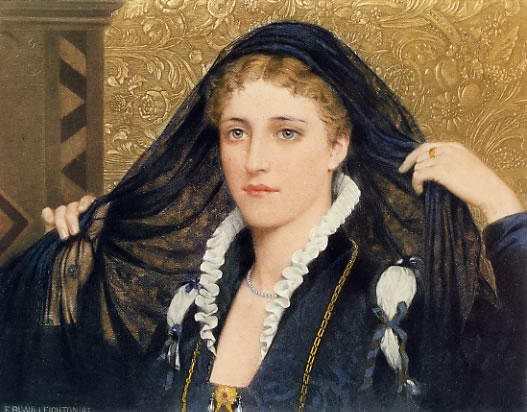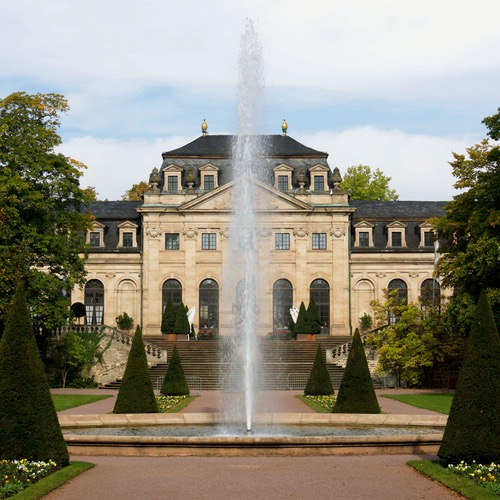Difference between revisions of "Perspectives on "Twelfth Night""
From Londonhua WIKI
Mthatfalvi (talk | contribs) |
Mthatfalvi (talk | contribs) |
||
| Line 17: | Line 17: | ||
=Introduction= | =Introduction= | ||
<br> | <br> | ||
| − | + | Shakespeare is a brilliant, romantic and comedic writer. He can captivate an audience even today with his writings. One such writing that makes people laugh and gives the audience something new at each performance is the romantic comedy "Twelfth Night". This play encompass the essence of Shakespeare who he was as a funny, serious and romantic individual. What makes this play timeless are the numerous interpretations that are performed even today. <br><br> | |
| − | <br><br> | + | The main goal for this project is to make a written plan of an interpretation for this play based on current and previous performances. One current performance that can be used to gain information was performed this year at the [[The Globe Theater|Shakespeare Globe]] in London. Another current one was performed at the [[National Theater]] in London. Two past performances include one from 1983 put on by the Royal Shakespeare Company and one that is to believe to be one of the first performances in 1602. All of these performances have a different style and twist which can be reviewed & researched through their individual reviews to figure out what people enjoyed in the story of 'Twelfth Night' and to help us with finding unique ideas for writing our own interpretation. |
| − | |||
<br><br> | <br><br> | ||
Revision as of 20:30, 1 June 2017
Perspectives on "Twelfth Night"
by Mary Hatfalvi & Justine Roy
 Duke Orsino and Viola by Frederick Richard Pickersgill |
Contents
Abstract
This project explores various performances of Shakespeare's "Twelfth Night" and how they were received by viewers and critics. The goal is to gain a better understanding of the relationship between "Twelfth Night" and how people perceive the show over time. Our previous experience includes courses on Shakespeare, theater technology, and photography. This milestone serves as our culminating capstone project towards our theater humanities depths.
Introduction
Shakespeare is a brilliant, romantic and comedic writer. He can captivate an audience even today with his writings. One such writing that makes people laugh and gives the audience something new at each performance is the romantic comedy "Twelfth Night". This play encompass the essence of Shakespeare who he was as a funny, serious and romantic individual. What makes this play timeless are the numerous interpretations that are performed even today.
The main goal for this project is to make a written plan of an interpretation for this play based on current and previous performances. One current performance that can be used to gain information was performed this year at the Shakespeare Globe in London. Another current one was performed at the National Theater in London. Two past performances include one from 1983 put on by the Royal Shakespeare Company and one that is to believe to be one of the first performances in 1602. All of these performances have a different style and twist which can be reviewed & researched through their individual reviews to figure out what people enjoyed in the story of 'Twelfth Night' and to help us with finding unique ideas for writing our own interpretation.
Section 1: Background
Summary
"Twelfth Night" is a romantic comedy by Shakespeare. After their ship is destroyed by a storm, twins, Viola and Sebastian, are individually rescued and each assume the other drowned. Viola hears of Olivia, the lady whom the Count Orsino is courting. Viola decides that she wants to meet Olivia who also is suffering from the death of her own brother. To do so she devises the plan of serving Orsino disguised as a boy and calling herself Cesario. Orsino has her pursuing Olivia for him as a messenger. Olivia falls in love with Cesario while Viola falls in love with Orsino. Meanwhile, Sebastian decides to go to Count Orsino unaware that his sister is alive. Upon arriving in the city, Sebastian is mistaken by Olivia for Cesario and she promptly marries him. Orsino finds out and, thinking that Sebastian is Cesario, gets extremely upset that his servant acted so wrongly against him. It is not until Viola and Sebastian end up in the same room that the siblings discover the other is alive and disguise of Cesario is abandoned. Olivia ends up happily married to Sebastian while Orsino and Viola become engaged.
Inspiration
There are clear relationships between "Twelfth Night" and other works that Shakespeare was exposed to as well as some new styles.
"Twelfth Night" is considered on of Shakespeare's great comedies and defies many of the prior conventions of comedy that his earlier comedies followed. Comedy was seen as a show that resolved happily. However, "Twelfth Night" despite having a positive ending is also serious and sobering. While Viola and Sebastian are reunited, the tragedy of what had happened to them is still present. In addition, the show does not end on the celebrations of the reunited twins and their relationships with Olivia and Orsino. Instead, the show returns to the shaming of Malvolio ending on a dark note as he promises revenge. Additionally, Shakespeare's focus in the structure of the show defies that of comedies. There are three subplots considered. The typical comedic plot focuses on the antics of Sir Toby, Sir Andrew and Maria harassing Malvolio and using his ego to deceive him. This plot is lighthearted and uses traditional styles of comedy such as farce. The second subplot is that between Olivia and Viola. As with the previous plot, a character is deceived and again follows the established comedic style. The third subplot involves Viola and Orsino and strays from comedy. Instead it explores a sentimental relationship between the two characters. Therefore, the logical structure for a comedy would focus on the plot against Malvolio then the relationship between Olivia and Viola and finally just feature the relationship with Orsino. This would satisfy a comedy of a series of carefully planned misfortunes. However, Shakespeare focuses on these plots in the reverse order. His focus is on the developing relationship with Orsino and Viola giving a considerable sincere side to the play. In doing so he defies the typical style of comedy. [1]
Despite the play's differences from traditional comedies, plots within "Twelfth Night" parallel those of other shows. These shows likely acted as inspiration for Shakespeare. One of the inspirations Shakespeare used was another one of his own plays "The Comedy of Errors". "The Comedy of Errors" was written as an adaptation of the story named "The Menaechmi" by the Plautus who lived in the late BC era. [2]This story is about two twin brothers separated and when they are grown both find themselves in the same town and are mistaken for each other. This gives explanation for the plot of mistaking two twin siblings. However where does the gender switching come from?
"Gl’Igannati" (The Deceived) (1537) by the academy of Intronati at Siena was likely the source for the gender triangle complication in Twelfth Night. [3] In summary, Gl’Igannati is about a girl, Lelia (Shakespeare’s version Viola), and her love for Flamminio (Duke Orsino). Lelia's father, a rich man named Virginio, loses his wealth and his young son Fabrizio but saves Lelia. Upon moving to a different city Lelia falls in love with Flamminio. He returns her affection until Lelia leaves with her father on a trip. While Lelia is gone Flamminio falls in love with Isabella, who doesn't want him. When Lelia returns she finds Flamminio no longer wants her so she devises a plan. She disguises herself as a boy called Fabio and becomes Flamminio’s page. A similar situation is played out by Viola disguising herself as Cesario and serving Duke Orsino but being in love with him. [3] "Twelfth Night" has several key differences though that create a new tone. In "Gl’Igannati", Lelia previously was in a relationship with Flamminio and, after being wronged, empowers herself. She embodies a strong heroine. In contrast, Viola does not fall in love with Orsino until after she disguises herself nor is she empowered. In fact, when presented with the issue of the love triangle, she resigns herself and hopes that time will sort the problem out for her. Furthermore, Shakespeare further complicates the show with the two other previously mentioned plots, transforming it into a comedy. [4]
Neither of these inspirations, however, had a character like Malvolio. Malvolio is important since he is the butler that thinks he is high & mighty and is then tricked horribly making him the subject of the key comedic plot. It is assumed that he is Shakespeare’s own invention. The most reasonable explanation for this is found in Dr. Tosh's Article, "The answer lies in something Maria says, after Malvolio has interrupted a late-night party in Olivia’s house. ‘Sometimes he is a kind of puritan,’ she remarks (2.3.125). Today we use the term ‘puritan’ to mean someone who is excessively strict about issues of personal and sexual morality, but it had a more specific meaning in the early seventeenth century. For Shakespeare and his contemporaries, to call someone a ‘puritan’ was to use a disrespectful term for someone with radical religious views. England’s ‘puritans’ were various groups of zealous Protestants who condemned anything that resembled Catholic ritual or tradition. They had many targets for their disapproval: singing, dancing, festive games, rich food, gaudy clothes, long hair – and theatre. Throughout his career, Shakespeare had to contend with extremists who regarded drama as an offence against religion and morality" [2] The character of Malvolio was someone Shakespeare wanted to use to almost 'revenge' puritans about their theatre hatred. Even when Mavolio is abused, in the end of the play Shakespeare then shows the audience that he is human with feelings and that what was done to Malvolio was wrong. This suggests the theme that mistreatment of humans even when they are in the wrong is never alright.
Finally, Shakespeare used his audience, venue and resources as an opportunity to develop his comedy. It is believed that "Twelfth Night" was written to be performed at the Middle Temple for the queen. Shakespeare includes comments by the charaters about their surroundings that describe the venue, breaking the fourth wall. The characters also comment on several occasions on the audience. One example of this is when Malvolio says, "I say, this house is as dark as ignorance" (Shakespeare IV. ii. 46-50). This would play with the audience as it would have been comprised by many of the elite and well educated. [5] Similarly, Shakespeare played with the fact that only men were allowed to act at the time. According to an Article written by Dr. Will Tosh on the inspiration of Twelfth Night, "Shakespeare’s plays were performed at a time when all of the actors were male, with teenage boys becoming the female roles. Shakespeare incorporated this convention into his plays, finding ways to turn what might be regarded as a disadvantage into a dramatic strength. In Twelfth Night, Viola isn’t just a girl dressing as a boy. She’s a boy playing a girl who pretends to be a boy, pursued by a boy playing a woman (Olivia) who ends up seducing a boy playing a boy (Sebastian). Part of the joke is that Viola-as-Caesario looks attractively feminine and irresistibly masculine depending on who is doing the looking: Orsino observes approvingly of his new pageboy’s appearance that ‘all is semblative a woman’s part’ (1.4.33), while Olivia compliments Viola on being ‘a proper man’ (3.1.125)". [2] Shakespeare through this inspiration also seems to suggest that the theme of gender is something based on how you act, rather than something based on what you were born with was a message he wanted to send trough this play.
National Theater
The National Theater's performance of "Twelfth Night" was playful but still grounded in realism. The setting spanned multiple time periods. While the costumes were largely modernized, older elements were brought in. For example, the maids' dresses were of a modern style but had ruffs on them. In the beginning the actors drove out in antique cars indicating yet another time period in the late twentieth century. The interior decorating of Olivia's house was modern. This blending of time periods is consistent with the idea that Shakespeare's plays are considered timeless. The National Theater took several creative liberties with the play. The gender of Fabian, Malvolio and the clown were all switched from male to female. This introduced new relationship dynamics as Malvolia was lesbian unlike Malvolio. Another surprising element introduced was Count Orsino boxing. It is another example of a modern activity being introduced to the show. The casting featured a relatively young cast with all the leads in what appeared to be roughly in their 20s or 30s. Overall, the show appeared to be quite faithful to the original script with only minor alterations being made to adjust for the different genders of characters.
Reviews
look at how this interpretation was received by the public and scholars and why
The Globe
The Globe's performance of "Twelfth Night" had the feel of a spoof in the style of Mel Brooks. The performance was goofy and the performers maintained character though they did not present convincingly realistic people. Instead, the characters were dramatized and occasionally broke the fourth wall. One of the most notable changes made was the introduction of a musical aspect to the show. While the clown sings on occasion in the original script, all of the characters were singing on multiple occasions during the show. This resulted in significant modifications to the script as some lines were removed and some converted into lyrics. Many other lines, however, remained untouched. The show appeared to be set in Scotland in the late 1970s as several of the characters wore kilts and many of the other costumes drew on fashion from that time period such as jumpsuits with bell bottoms. In addition, several songs from that time period were referenced including "We are Family" and "I Will Survive". The casting for the show was older than for the National Theater's performance and appeared to have a decent sized age gap between Olivia and both Orsino and Olivia. In addition, the clown did not have as clear of a role. While the clown in the National Theater's performance had a significant role in the antics and in revealing themes, the clown in this performance was not well defined. He primarily just led the characters in song. Without knowing the play the character of the clown would quite possibly be very confusing.
Reviews
According to a review from The Culture Whisper, "Twelfth Night is delightful and enchanting, even if it is not a transformative or revolutionary adaptation. More than anything, she (Emma Rice who was the artistic director) focuses on making Shakespeare highly entertaining, accessible, joyful and communal." [6] The review also talks about this Malivolio that "straddles the line beautifully between being endlessly obnoxious and equally loveable." [6]
Another review said that this interpretation was "an absolute hoot...freely embellished and fulsomely overdone. ...clownish caricatures instead of credible characters." [7] The pop songs and humor made the play more fun then serious from this review's perspective. This review warns traditional Shakespeare fans that this is not an original old style performance.
Our personal review as that compared to the original and other interpretations, this had more of the of humor and mood from a Mel Brooks film. Make a show and don't be serious. The show wasn't supposed to be taken as something to learn from but to give entertainment.
Twentieth Century Performance
According to the Royal Shakespeare Theatre production log, in 1983 the Royal Shakespeare Company, located in Shakespeare's hometown Stanford-upon-Avon, performed an interpretation of Twelfth Night. [8] The Director was John Caird and the set design was Robin Don. Don had in the middle of the stage a huge tree that reached to the top of the theatre. This set around the tree had sand with a black back drop. The lighting which was designed by David Hersey to look like stars, a moon, dawn, and twilight. [9] The performance was more like the original way it was performed with Elizabethan era costumes and style. The story was not portrayed as a happy comedy. It was given more of the performance mood of a dramatic dark comedy.
Reviews
Patrick Farmer who reviewed at the time three Royal Shakespeare Theatre plays done at the time found this play interpretation the most satisfying. [9] He thought that Malvolio was a comic force. His big aspect he found was that the actors of the company were very versatile in their roles. [9]
Another review from the Guardian in 1984 by Nicholas de Jongh said that "I (himself) cannot remember a Twelfth Night so steep in an atmosphere of autumnal rejection, or one which shows so graphically people wither under the strain of hopeless love." [10]
Yet another review which talks about the dark comedy and comparison of other interpretations was found from The Times by Irving Wardle writes about the play:"Quite a deal of poison has been seeping into this play over the past few years, but John Caird's is the first I have seen that projects Twelfth Night as an all-out dark comedy. This is good news not only for jaded old spectators who have seen the piece too often. There is a limit to the amount of fun that can be extracted from the drinking scene and permutations of Malvolio's letter in a play that was never more than intermittently uproarious. And there is everything to be said for muting the comedy for once and giving full attention to the central matter of the illusions and frenzies of love."[11]
This play was put on more like the original interpretation then a more modern version. Overall, people seemed to like this interpretation a lot.
Original Performance
This play was first performed according to J.W Draper, who was a professor of English at West Virginia University in , in January 1601 on 'Twelfth-Night Eve' for the Queen Elizabeth I and her court at Whitehall palace. [12] It was "the Queen's Twelfth Night entertainment to regale 'the living Duke Orsino.'" [12] Virgino Orsino was the Duke of Bracciano at the time of Queen Elizabeth I and she entertained him royally on the twelfth night. However, it is known that the Middle Temple was the place where Shakespeare wanted this play to be performed. [5] Twelfth Night at the Middle Temple opened in February 1602.
The set for the original play saw some parts taking place by the seashore, then in the nearby city. The city, according to J.W Draper, was supposed to be somewhere in Italy specifically Venice and the Venetian colonies in Dalmatia. [13] The dialogue of the play has some Italian wording but also Latin, French and Spanish. The suggestion about the setting and different combination of dialect is that Shakespeare wanted his play to reach across the globe to be performed other places and for it to not just be done in England. The plot, dialogue and costume however was written in Elizabethan style. Shakespeare's original style for this play was comedic and dramatic.
Reviews
John Manningham who say the performance at the Middle Temple in 1602 gives his mention of the play talking about Steward Malvolio and how the play was similar to the plays 'Commedy of Errors', 'Menechmi' by Plautus and 'Inganni'. [14]
In further taking about the subplot of the play in his original writing,
"A good practise in it to make the Steward beleeve his Lady widdowe was in love with him, by counterfeyting a letter as from his Lady, in generall termes, telling him what shee liked best in him, and prescribing his gesture in smiling, his apparaile, &c., and then when he came to practise, making him beleeue they tooke him to be mad." [14]
According to a review on Bruce Smith's findings in John Manningham's Diary that "in this particular entry, and in those that surround it in the diary, Smith discerns seven subjects (or 'contexts' [6]) of continuing fascination to Manningham and presumably to others like him in the Middle Temple: Romance, Music, Sexuality, Clothing and Disguise, Household Economies, Puritan Probity, and Laughter and Clowning."[15] Manningham and other playgoers at the time really enjoyed this original performance of "Twelfth Night'. It gave laughter and enjoyment to the people who saw it.
Section 2: Deliverable
Tone
The tones of the two different performances we saw at the National Theater and The Globe were quite different. While both performances were designed to be funny, the National Theater's performance remained grounded in realism. In contrast, The Globe's performance was overly theatrical and goofy coming off as a spoof. Based on personal opinion and others' reviews, we opted for a realistic tone. The reviews indicate that people appreciate when they can relate to the characters and have an emotional connection. In the 1893 performance, a key point was that it was not all just humor but that it also addressed the struggles of the lovers. We believe that by keeping the acting natural and realistic, the audience can become better immersed in the show, which also can result in heightened comedy when it does happen as the audience is better connected with what is taking place.
Setting
We decided to set the play roughly modern day and in an area inspired by New York City. Both of the adaptations of "Twelfth Night" that we saw incorporated various modern elements to them ranging from set to costumes to music. Modernizing the show keeps it interesting for viewers. It is harder for a person to relate to the entirely different culture of Shakespeare's time. By updating the show, it again helps viewers connect with the performance. To further that, we want the show set in an area similar to New York City. Cities are often closely tied with the image of modern society, particularly the modern architecture and skyscrapers present. Additionally, New York City is a very familiar sight to people all over the world as it is often the setting for many movies, television shows and featured in art forms. Therefore, this sort of setting would feel familiar to the audience.
Characters
There are several creative liberties we would take with the characters including gender switching and modernizations. In keeping with the theme of modernizing the show, some minor and often subtle changes would be made to the portrayal of the characters. Instead of being a count, Orsino would be a mayor. This way he would still be in charge of the area but have a modern title. In accordance, Viola as Cesario would be portrayed as his personal assistant when working for him. This would be manifested only in how the character is presented. Nowhere in the script is Cesario's position clearly named. The distinction of being a personal assistant would be shown through costuming and their interactions. This sort of role would make the most sense for the characters in their modernized world. Viola and Sebastian's position in society would be translated to that of upper class citizens, there father having been a CEO. This would explain why Antonio should have known of their father. Meanwhile, Olivia, Sir Toby and Sir Andrew would be socialites as they are clearly rich. They live privileged, frivolous lives. Furthermore, Malvolio and the clown would have to be carefully executed. Malvolio consistently stole the show in all of the performances. As with the critics, we enjoyed the change of Malvolio to Malvolia. This change plays up the gender fluidity in the show and adds an additional layer of depth to the show. We believe she should be depicted as a strict, old school nun teaching in a Catholic school.
Her harsh, straight edge demeanor provides greater contrast heightening the comedy of her transformation after reading the letter. If the character is made humorous at all beforehand, the transition becomes less comical as she would not be taken as seriously. A humorous character becoming the subject of comedy is nothing remarkable. However, a stern and harsh character turning comedic is noteworthy. In addition, we again liked National Theater's take on the clown as a clever, witty female. This made the humor more intellectual and she acted as a catalyst throughout the show. In contrast, The Globe reduced the role of the clown until it was almost unrecognizable. We prefer the clown to be a dynamic character. To keep with the modernization, she would not be portrayed as a stereotypical clown but more as a fun loving performer. Her costume would be colorful and playful in contrast to the other characters.
Script
Our goal is to avoid tampering with the script. The more it is changed, the less authentic it feels and it loses the charm and character that Shakespeare put into it. The performances we have seen primarily kept the original script. Only minor revisions were made for gender switches. The Globe further altered their script to make it musical but that also seemed to detract from the script as many lines were lost in lyrics. Our modifications would only go so far as to account for the gender changes and role changes. For example, count would become mayor, Malvolio would be Malvolia, and the clown would primarily be referred to with generic terms and pronouns as clowns are no longer employed as they once were. We do not want to detract from Shakespeare's characters and themes by modifying the script too much.
Conclusion
The story of 'Twelfth Night' is a romantic comedy, makes fun of the gender roles and humanity as a whole. Shakespeare when writing this play wanted to make people laugh and to also teach people about how important it is to treat others with respect and with dignity. Overall, people like this play when it is done more realistically. Making the tone of the story more of a spoof takes away some of the beauty of the story and the humanity lessons within it. Another aspect to the play that Shakespeare and modern adaptations have done is the
gender switching of the supporting characters like Malvolio. A female Malvolio gives the originally male character a new way of looking at the character as whole. 'Twelfth Night' is a brilliant Shakespeare play that can be interpreted in many different ways.
Future research could include perspectives on another Shakespeare play.
References
- ↑ Crane, M. (1955). Twelfth Night and Shakespearian Comedy. Shakespeare Quarterly, 6(1), 1-8. doi:10.2307/2866046
- ↑ 2.0 2.1 2.2 Tosh, W. (2016, February 11). Hunting for Shakespeare's sources - Where did Shakespeare get his ideas for Twelfth Night from? Retrieved May 24, 2017, from http://2016.playingshakespeare.org/essay/hunting-for-shakespeare-s-sources
- ↑ 3.0 3.1 William Shakespeare; J.M. Lothian; T.W. Craik (18 September 1975).Twelfth Night Cengage Learning EMEA. pp. 35–6. ISBN 0-17-443625-4
- ↑ L. G. Salingar. (1958). The Design of Twelfth Night. Shakespeare Quarterly, 9(2), 117-139. doi:10.2307/2867233
- ↑ 5.0 5.1 Akrigg, G. (1958). Twelfth Night at the Middle Temple. Shakespeare Quarterly, 9(3), 422-424. doi:10.2307/2867369
- ↑ 6.0 6.1 Macdonald, B. (2017). Twelfth Night, The Globe review. Retrieved May 26, 2017, from https://www.culturewhisper.com/r/theatre/summer_of_love_shakespeares_globe_twelfth_night_emma_rice_2017/8773
- ↑ Trueman, M. (2017, May 25). Review: Twelfth Night (Shakespeare's Globe). Retrieved May 26, 2017, from http://www.whatsonstage.com/london-theatre/reviews/twelfth-night-shakespeares-globe-emma-rice_43684.html
- ↑ 1960-2005 productions | Twelfth Night. (n.d.). Retrieved May 26, 2017, from https://www.rsc.org.uk/twelfth-night/past-productions/1960-2005-productions
- ↑ 9.0 9.1 9.2 Farmer, P. (1984). Theatre Journal, 36(1), 113-115. doi:10.2307/3207372
- ↑ Gay, P. (2005). As she likes it: Shakespeares unruly women. London: Routledge.
- ↑ Irving Wardle, The Times, 21 April 1983
- ↑ 12.0 12.1 Draper, J. W. (1950). Appendex A - Date, Season, and Time Analysis of The Play. In The 'Twelfth Night' of Shakespeare's Audience (pp. 257-261). Stanford, CA: Stanford University Press.
- ↑ Draper, J. W. (1950). The Setting, Style, and Theme of 'Twelfth Night'. In The 'Twelfth Night' of Shakespeare's Audience (pp. 233-256). Stanford, CA: Stanford University Press.
- ↑ 14.0 14.1 Manningham, J. (1968). Diary of John Manningham, of The Middle Temple, and of Bradbourne, Kent, Barrister-At-Law (Ser. 1) (J. Bruse, Ed.). Westminster: J.B Nichols and Sons. Facsimile reprint of 1868 ed. First published by Royal Historical Society, 1868.
- ↑ KO, Y. (2003). Early Theatre, 6(1), 101-104. Retrieved from http://www.jstor.org.ezproxy.wpi.edu/stable/43499184
Attribution of Work
For milestones completed collaboratively, add a section here detailing the division of labor and work completed as part of this milestone. All collaborators may link to this single milestone article instead of creating duplicate pages. This section is not necessary for milestones completed by a single individual.
External Links
Image Gallery
If appropriate, add an image gallery



